Nova Scotia Oatcakes
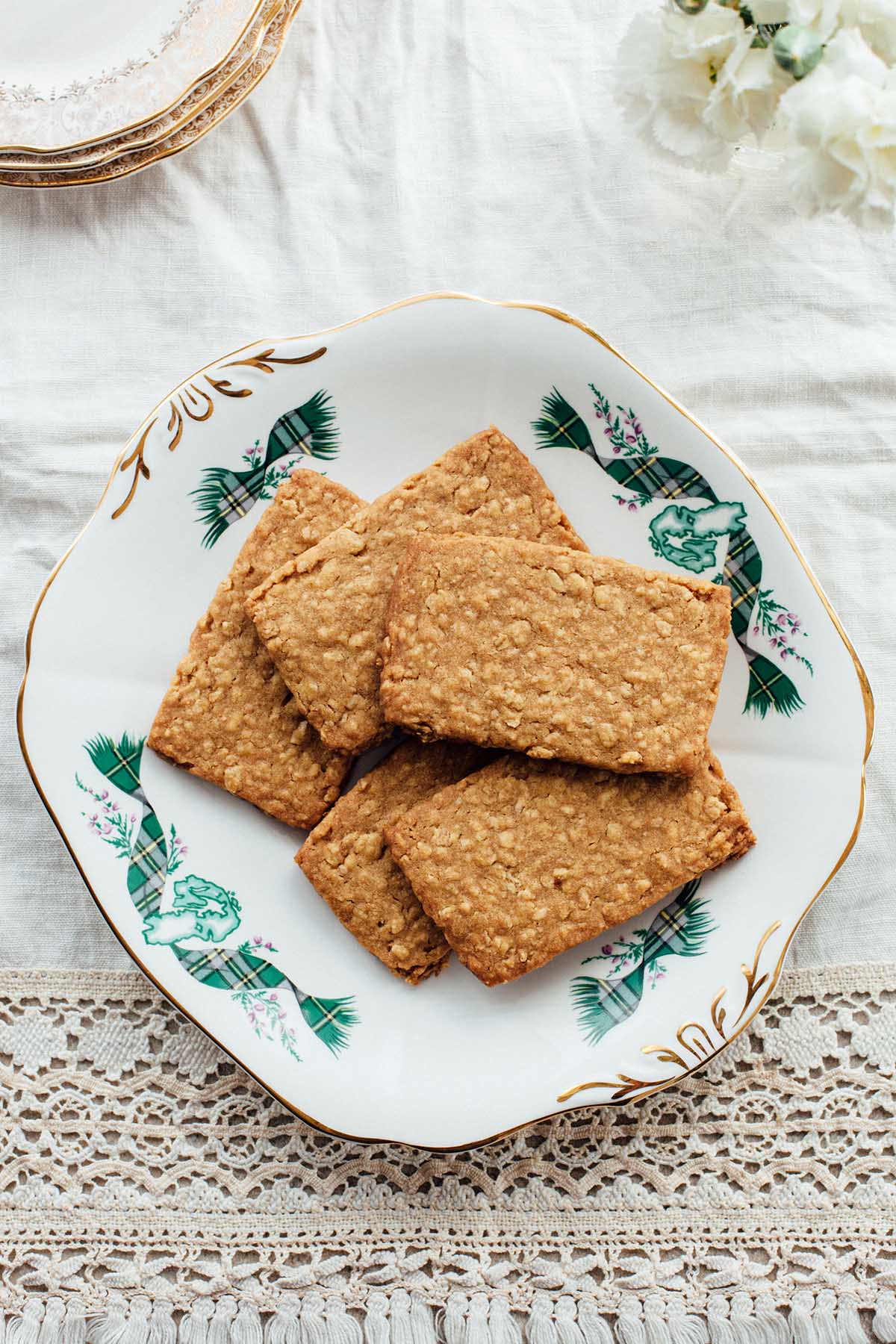
I adore old-fashioned cookie recipes such as brown sugar shortbread cookies and chocolate chip pecan cookies and these Nova Scotia oatcakes are very high on my list!
If you’re not familiar, oatcakes are lightly-sweetened shortbread-like cookies loaded with oats. Scottish in origin, oatcakes are prevalent on Cape Breton Island, located at the Eastern tip of Nova Scotia. Cape Breton has a high concentration of families with Scottish ancestry, and for this reason, oatcakes are a popular snack across the Island.
Jump to:
📋Ingredients
- All-purpose flour
- Rolled oats (sometimes called large flake oats)
- Baking powder
- Salt
- Butter
- Brown sugar
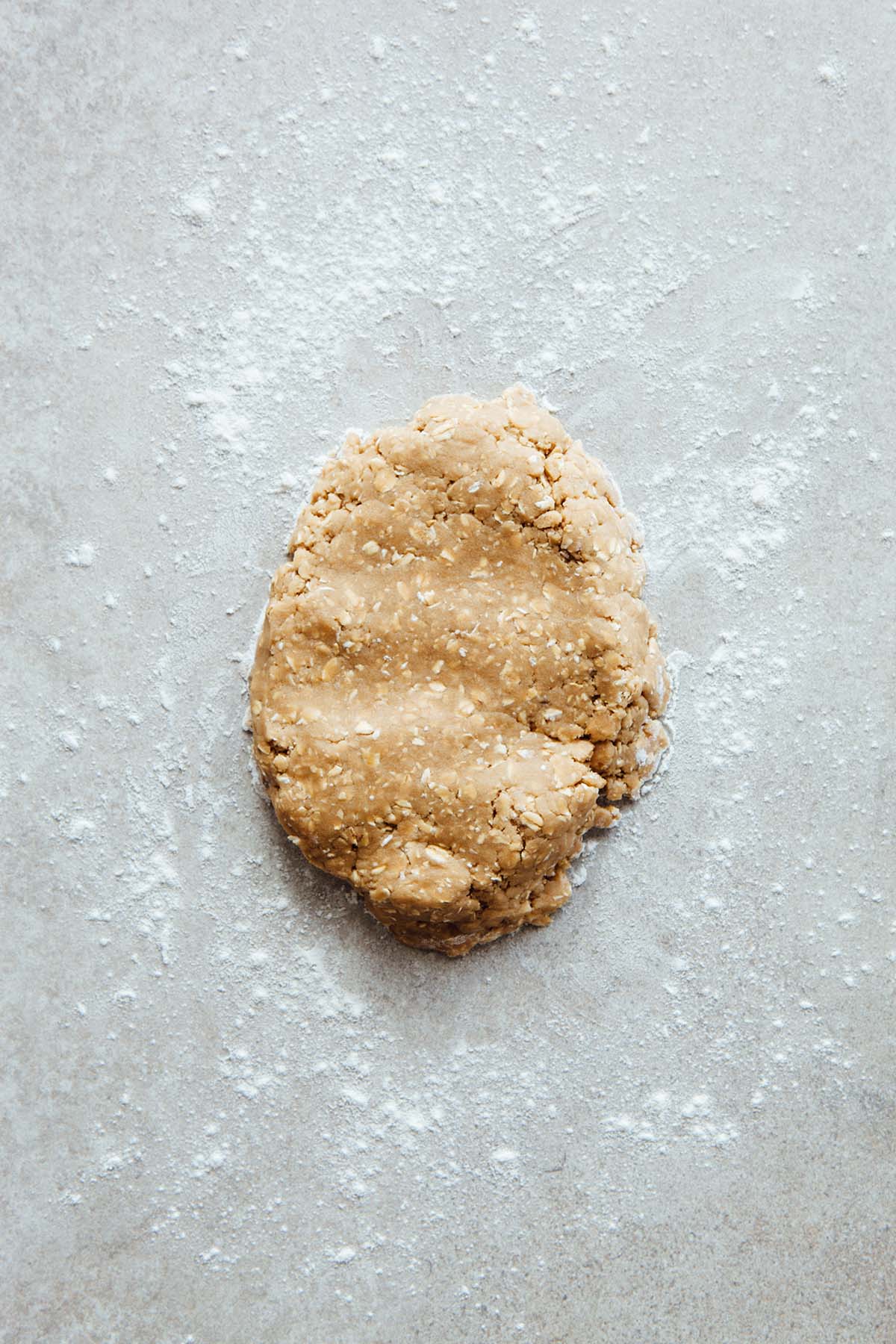
Best Oats To Use
Rolled oats, also called large flake oats, are the best oats to use in this recipe. You can make Nova Scotia oatcakes with instant oats, and they will taste pretty much the same, however, instant oats lack the hearty texture of large flake.
Some people use steel cut oats to make oatcakes. I haven’t tried this myself and would love to know if you do!
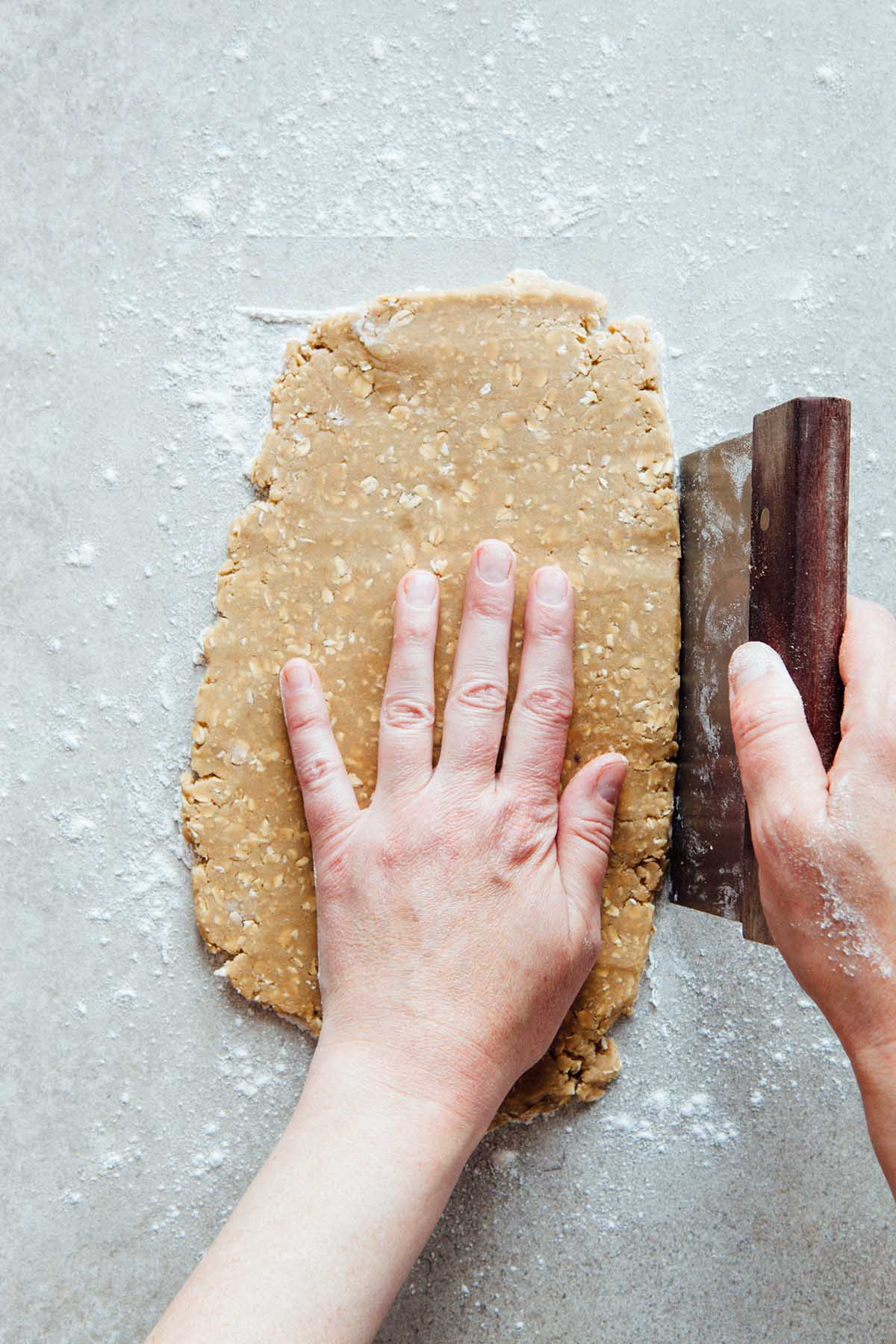
I tested my oatcakes with butter, vegan butter, shortening, vegetable oil, and coconut oil. Each batch was delicious, however, they all had different textures. Here’s what happened:
- Butter – Yields the oatcake I imagined when I first set out to develop my ideal Nova Scotia oatcakes. Beating the butter light and fluffy with a mixer gives the oats and flour something to “stick” to, and creates an oatcake that bakes up firm and crisp.
- Vegan Butter – Oatcakes made with vegan butter had the next best texture to regular butter; They held together perfectly. That being said, they lacked a bit of flavour compared to the real deal.
- Vegetable Shortening – The oatcakes made with shortening were super crumbly and didn’t hold together the way butter does, however, better than the versions made with liquid oils. I thought the shortening oatcakes would lack flavour, however, the opposite was true. The oats and brown sugar have enough going on that the absence of butter wasn’t glaringly obvious.
- Vegetable Oil – The flavour was great but the oatcakes were far too crumbly. The vegetable oil version barely held together, however, I have read of others having success with it. If I was developing an oil-based oatcake I’d have kept working to get it right, however, I prioritized the all-butter version for this post.
- Coconut Oil – Yielded the same result as vegetable oil – very, very crumbly. The coconut oil batch had a lovely light note of coconut flavour and I was sad they didn’t work out!
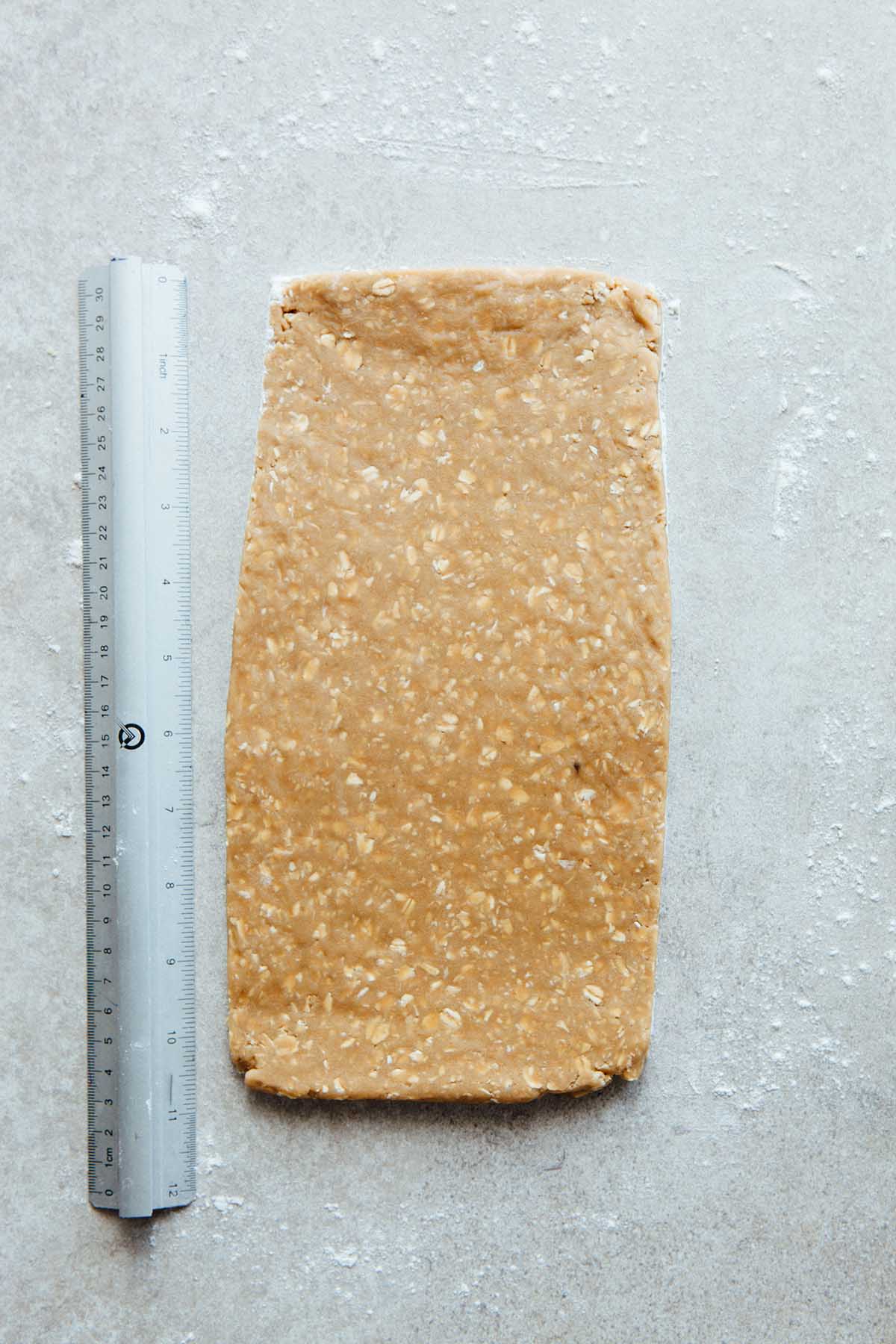
Should Oatcakes Be Cut Round Or Square?
My partner Chris is from Cape Breton. When I asked family and friends who live on the island for thoughts, one person replied, “I don’t think I’ve ever even seen a round oatcake”. That answer sealed the deal! Because this recipe is for crispy Cape Breton-style oatcakes I decided to cut them square.
I rolled my oatcake dough approximately 5-inches wide by 11-inches long (28-cm x 13-cm), and about ¼-inch (5-mm) thick.
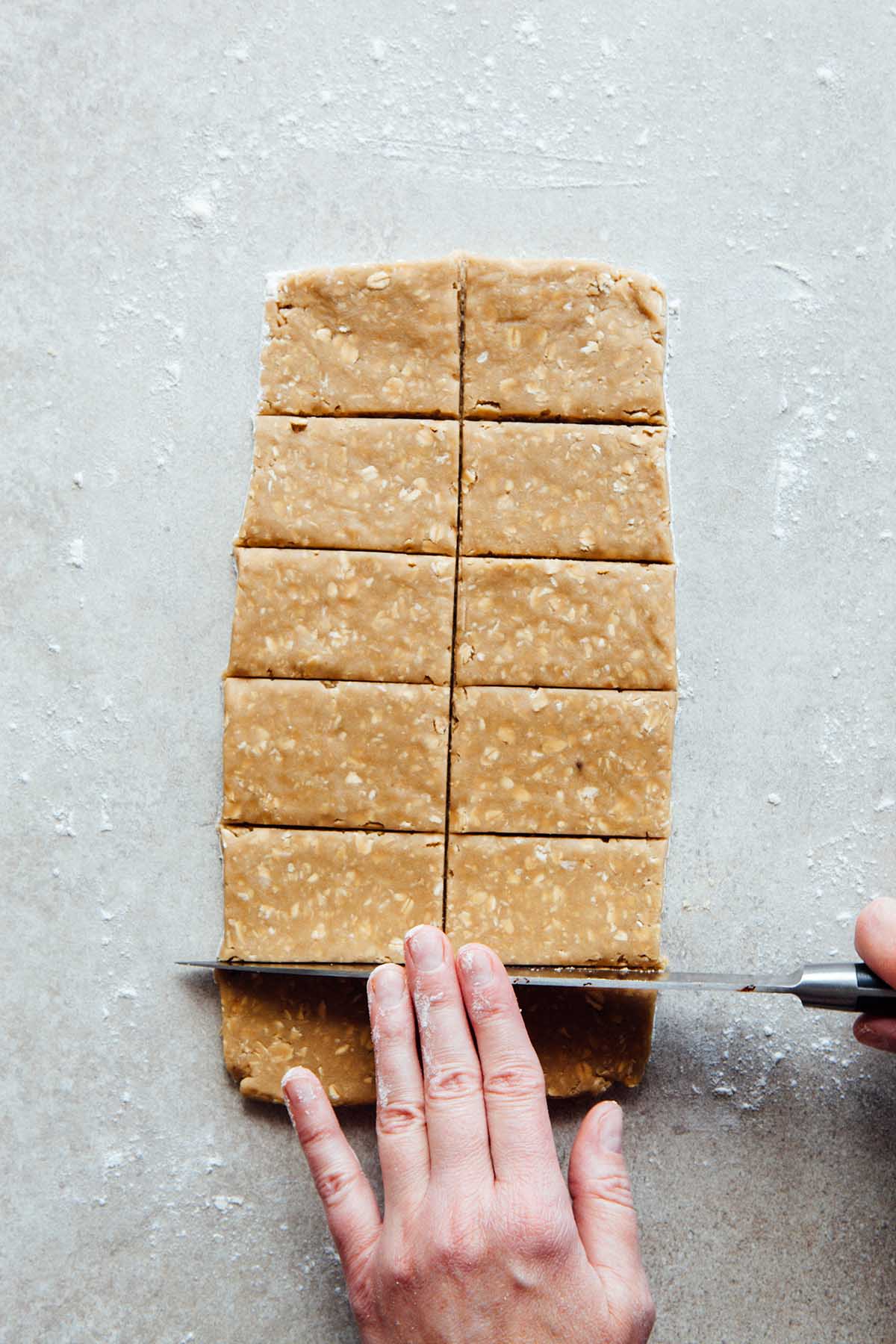
Scoring vs. Slicing
I’ve tried both scoring (cutting lines halfway through the dough then baking it in one piece to be snapped apart when cool) and slicing my oatcakes to bake as individual cookies. Both work great and I think you should just choose with whichever method you prefer.
- To Score The Oatcakes – Cut a piece of parchment paper to fit your baking sheet. Roll the oatcake dough directly on the parchment paper and transfer it to the sheet. Use a pizza cutter, or a thin sharp knife, to cut lines in the top of the dough where you want to break the oatcakes apart after they’re baked and cooled. When scoring dough, do not cut the dough all the way down to your work surface. You just want to create impressions in the dough, about halfway through, to snap clean lines later on.
- To Slice The Oatcakes – Roll your dough on a lightly floured counter top, then use a sharp knife to cut the dough. Use a small spatula, or an offset spatula to transfer the oatcakes to your parchment paper-lined baking sheet. Space the cookies evenly apart as they will spread slightly while baking.

What Size Pan Should You Use?
I use a baking sheet that’s slightly smaller than a standard 13 x 18-inch (33 x 46-cm) half sheet (my pan is approximately 12 x 17-inches (31 x 43-cm). Anything in this size range will work well whether you’re leaving the dough whole and scoring the top, or slicing the dough into individual cookies.
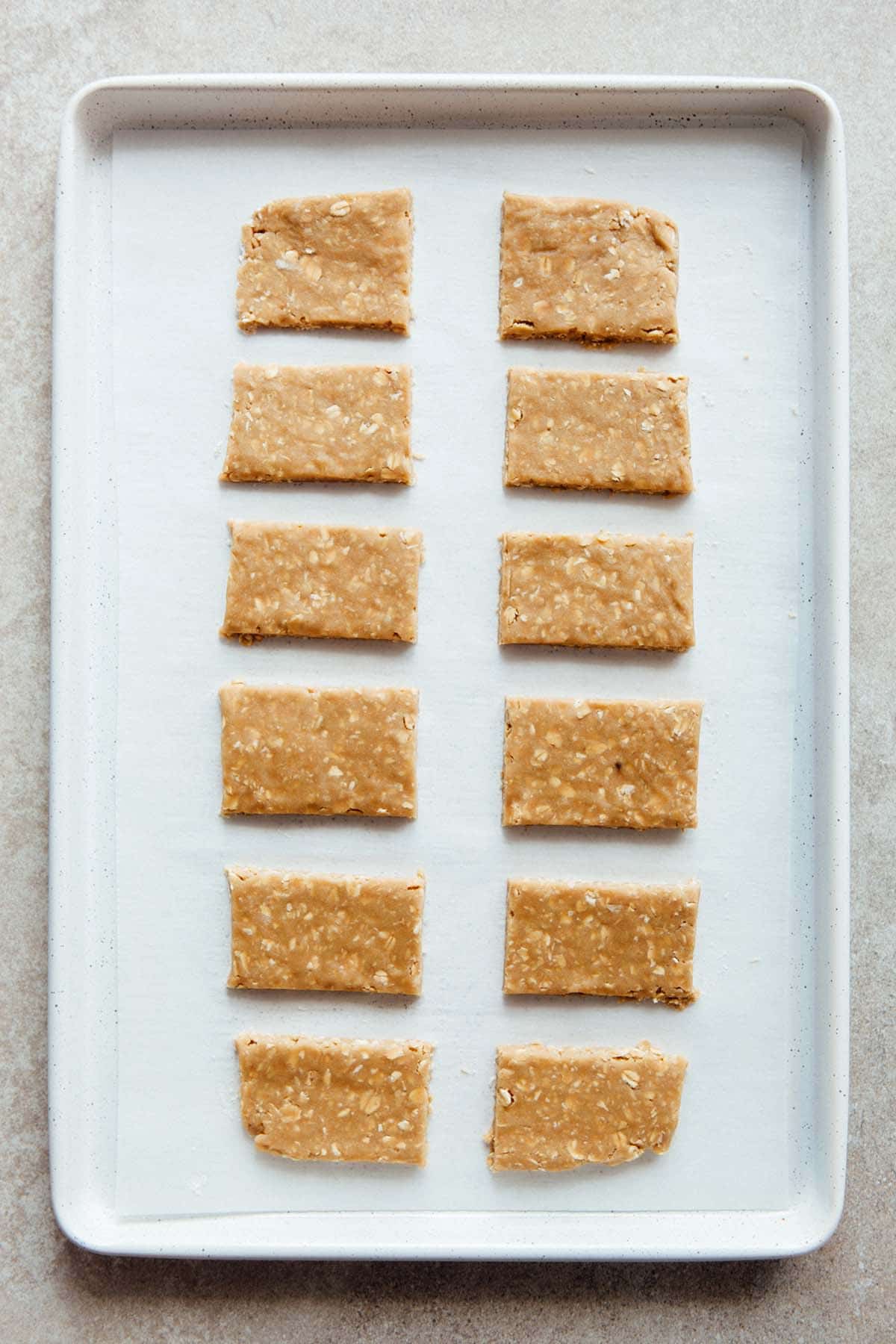
Make Oatcakes Gluten-Free, Vegan, Or Both
I made three different combinations of gluten-free and vegan oatcakes while testing this recipe. I used Bob’s Red Mill Brown Rice Flour and Vegan Becel (not sponsored) to make them as that’s what I had on hand.
Please note if you are making oatcakes with rice flour you will probably not be able to roll them with a rolling pin. Instead, pat the dough into shape with your hands.
- To Make Gluten Free Oatcakes – Substitute 1 cup (160g) of brown rice flour for the all-purpose flour and use certified gluten-free oats. You will probably not be able to roll the dough. Instead, pat it into shape with your hands.
- To Make Gluten-Free Vegan Oatcakes – Substitute 1 cup (160g) of brown rice flour for the all-purpose flour and use certified gluten-free oats. Use the same amount of vegan butter as butter called for in the recipe. You will probably not be able to roll the dough. Instead, pat it into shape with your hands.
- To Make Vegan Oatcakes – Substitute the same amount of vegan butter as butter called for in the recipe.
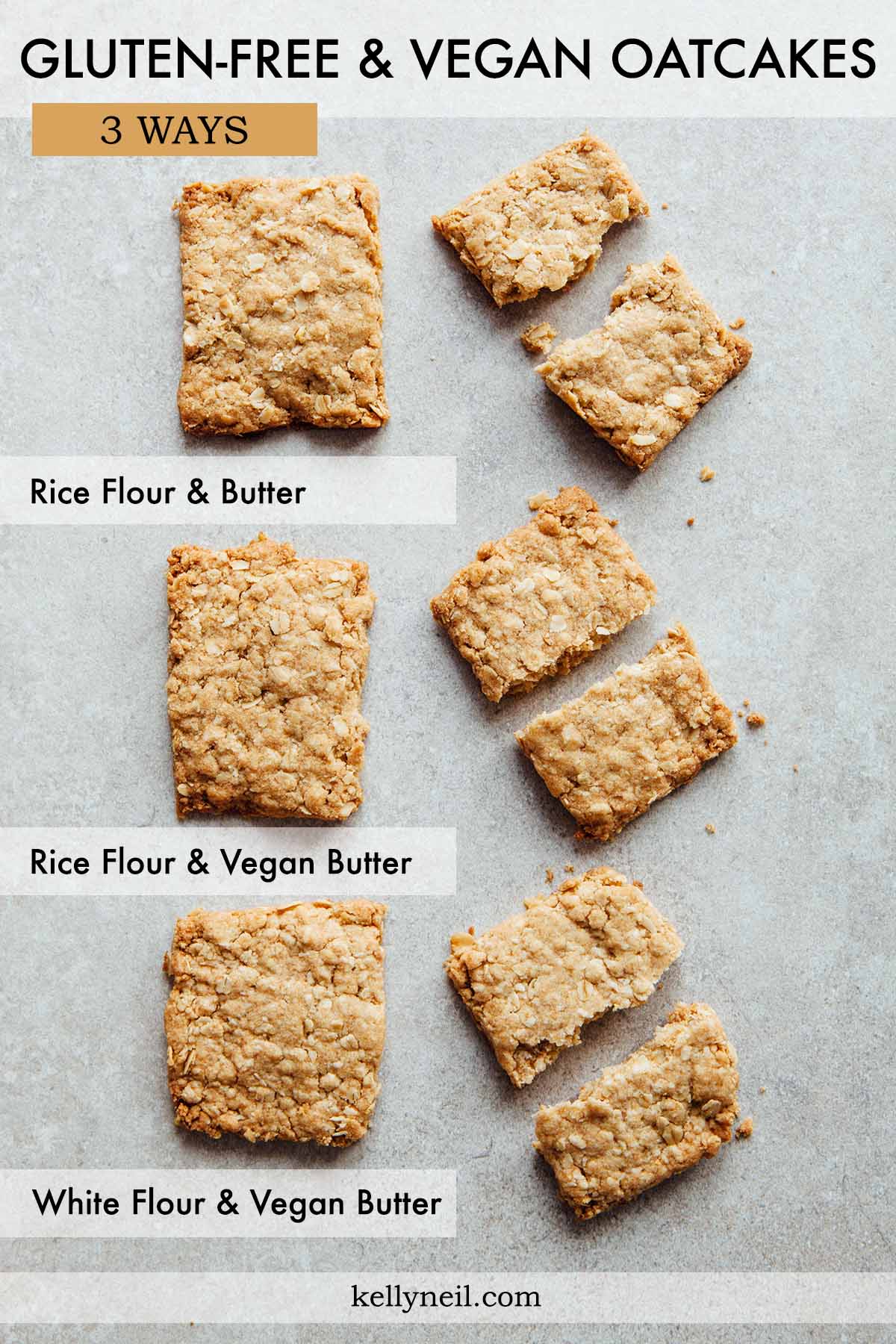
Add-Ins
I’m a purist and like to leave my Nova Scotia oatcakes unadorned, without any additions. If you do want to add other flavours, here are some ideas you could try:
- Melt some chocolate then dip one half of each cooled oatcake in the chocolate. Lay on a rack until the chocolate hardens.
- Add a dollop of peanut butter to the butter and brown sugar in the mixer and proceed with the recipe as written.
- Try spices like cinnamon, cardamom, nutmeg, or homemade chai spice
- Throw in ½ cup of nuts or seeds – walnuts, almonds, pecans, or sunflower, pumpkin, or sesame seeds
- Add ½ cup dried fruit – raisins, cranberries, or chopped dates
- Anything else you have in your pantry that you think might be delicious!
Recipe Notes
- Before Baking The Oatcakes – If you place your cookies in the oven directly after slicing they will spread a tiny bit. If you want more perfect, squared off edges place your unbaked oatcakes in the freezer for 20 minutes before putting them in the oven.
- To Serve Oatcakes – I like to eat mine plain alongside a cup of tea. My mother-in-law butters the top of her oatcakes. Others serve them with a slice of sharp cheddar. They are also fantastic accompanied by fresh fruit like apples, pears, or bananas.
- To Store Oatcakes – Place oatcakes in an airtight container with a tight fitting lid on the counter for up to one week. They will also keep on the counter, stacked together, and wrapped in foil. After one week I would pop them in the freezer. Ours never last that long!
- To Freeze Oatcakes – If using a container with a lid, place one layer of oatcakes in the bottom of the container and top with a sheet of parchment paper cut to fit. Place a second layer of oatcakes on top of the paper and repeat until all of the oatcakes are in the container. Another option is foil. Stack and wrap the oatcakes tightly in two layers of foil. For either method you can keep the oatcakes in the freezer for up to three months.
- To Reheat Oatcakes – Remove as many oatcakes as you need from the freezer. Thaw to room temperature and eat, or warm in the microwave, toaster-oven, or oven until heated through.
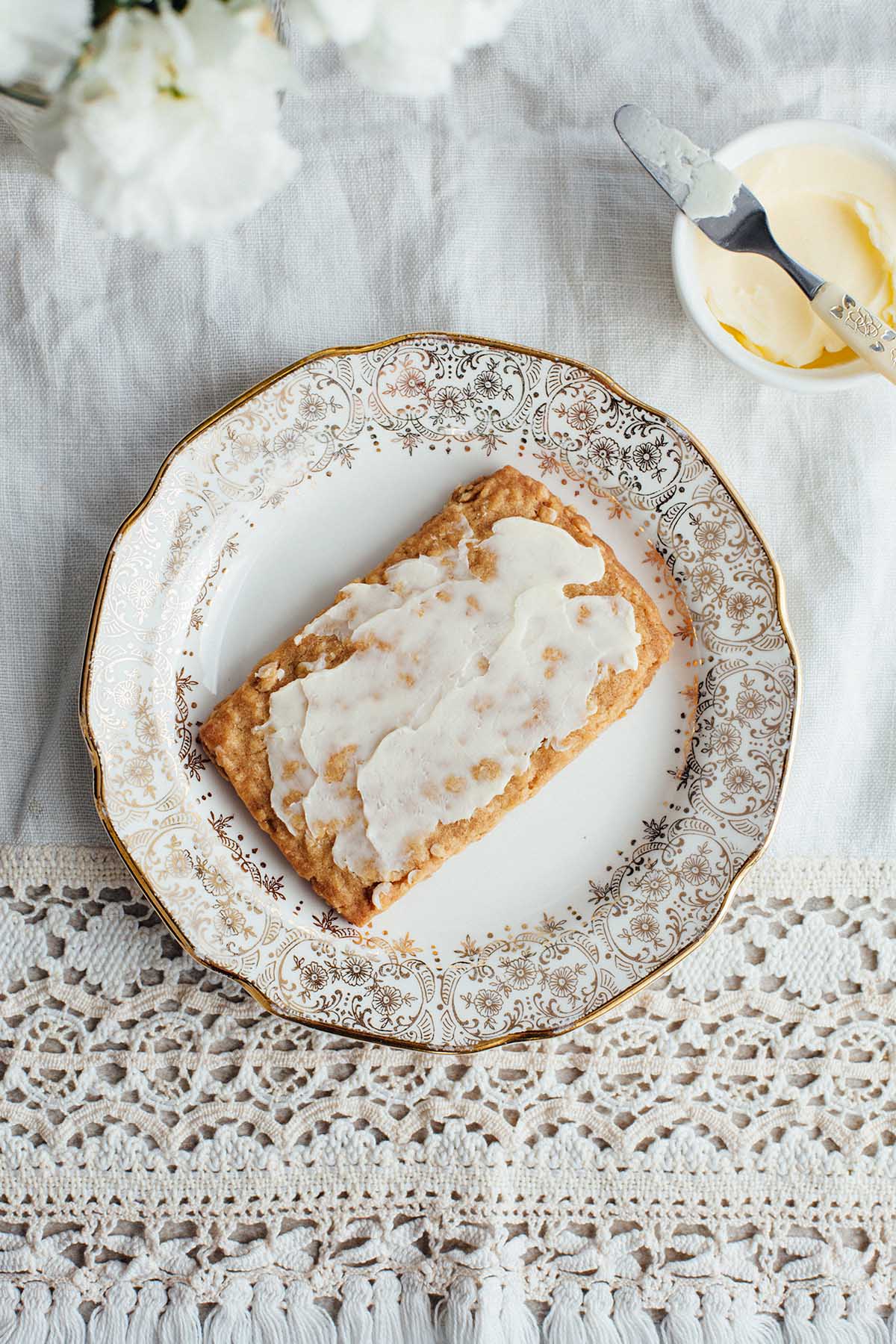
💃More Nova Scotia-Inspired Recipes
Did you make these Nova Scotia oatcakes? Please rate the recipe and tell me how it went in the comments below. Also, stay in touch with me on Instagram, Facebook, and Pinterest to see more delicious food and recipes!
Printable Recipe Card
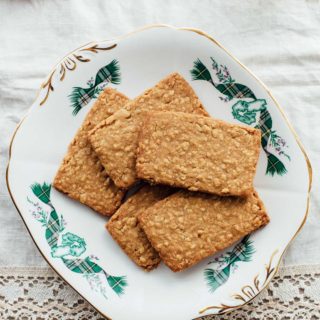
Nova Scotia Oatcakes
Special Equipment
- Baking sheet
- Parchment paper
- Stand mixer with both whisk and paddle attachment
- Rubber spatula or wooden spoon
- Rolling Pin
- Sharp knife
- Small offset spatula or something else small and flat to lift oatcakes from work surface
- Wire cooling rack
Ingredients
- 1 cup all-purpose flour
- 1 cup rolled oats , also called large flake oats
- ½ teaspoon baking powder
- ½ teaspoon salt
- ½ cup butter, room temperature
- ½ cup brown sugar
Instructions
- Preheat the oven to 350ºF (180ºC). Line a baking sheet with parchment paper.
- Mix the flour, oats, baking powder, and salt in a medium-sized bowl. Set aside.
- Place the butter in the bowl of a stand mixer and mix it with the whisk attachment, on medium-high speed, until light and fluffy, about 3 to 4 minutes.
- Add the brown sugar and continue to mix until smooth, about 2 minutes more, scraping down the sides of the bowl halfway through mixing.
- Switch to the paddle attachment. Add the flour mixture to the mixing bowl. Mix on low speed until the dough starts to clump together and most of the dry bits at the bottom of the bowl are mixed in.
- Dump the dough onto a lightly floured work surface and shape it into a smooth disc with your hands. With a rolling pin, roll the dough into a rough rectangle shape approximately 5×11-inches (28 x 13-cm) in size, and about ¼-inch (½-cm) thick.
- Use a sharp knife to cut the dough into 12 even pieces. Using a small spatula, or an offset spatula, lift each oatcake onto the prepared baking sheet.
- Place the oatcakes in the oven and bake them for 13 to 15 minutes, or until the edges are golden. Set the pan on a cooling rack and let the oatcakes cool completely. They will crisp up as they cool. Serve with tea, butter, cheese, fruit, or anything else you like.

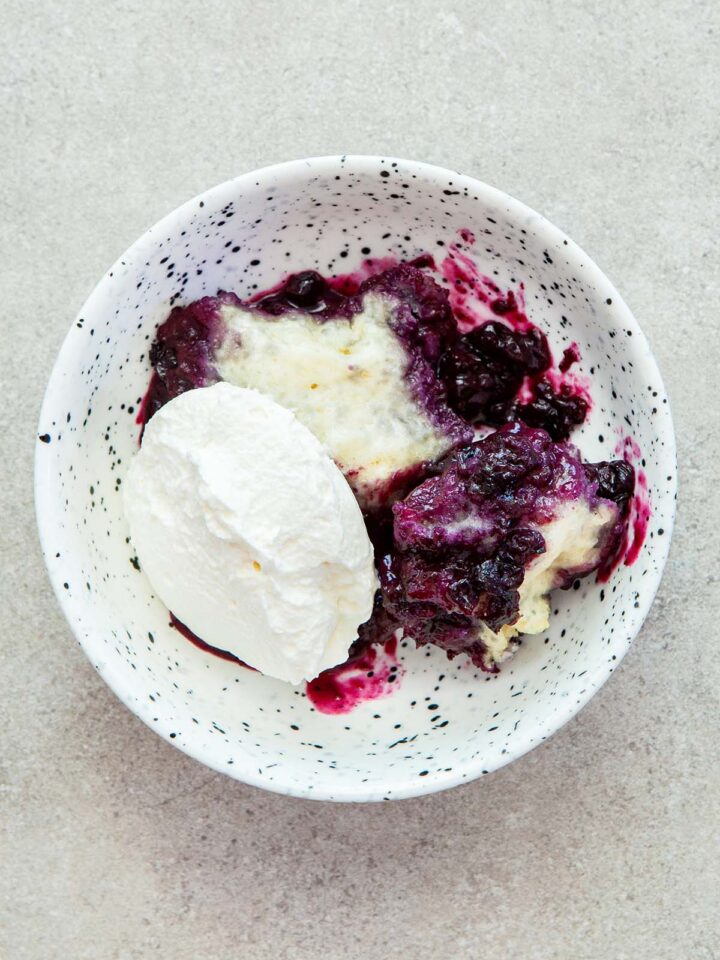
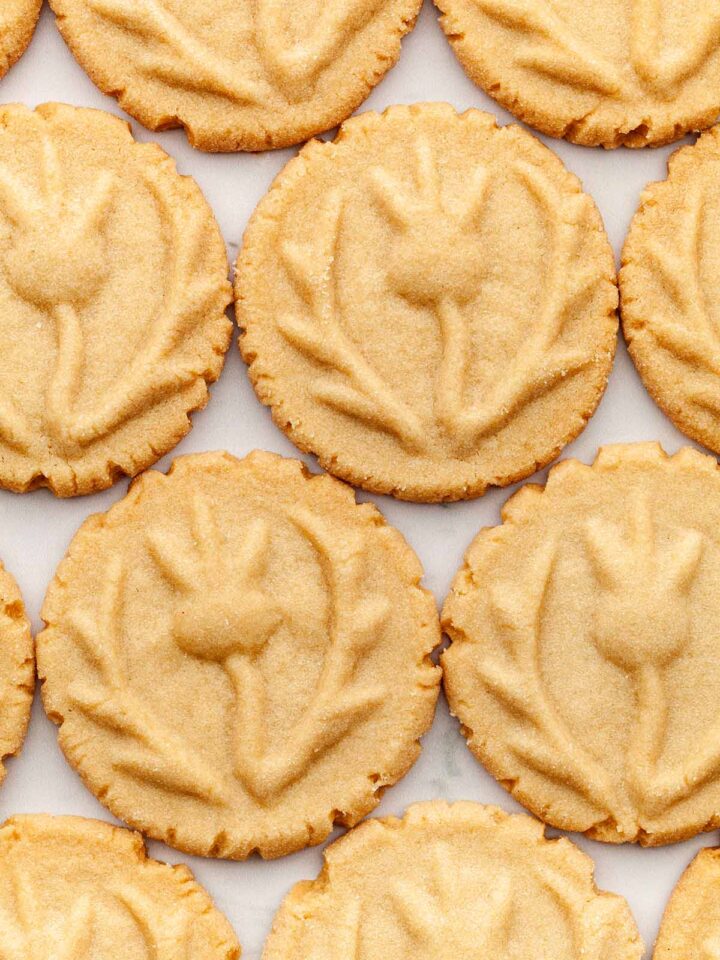
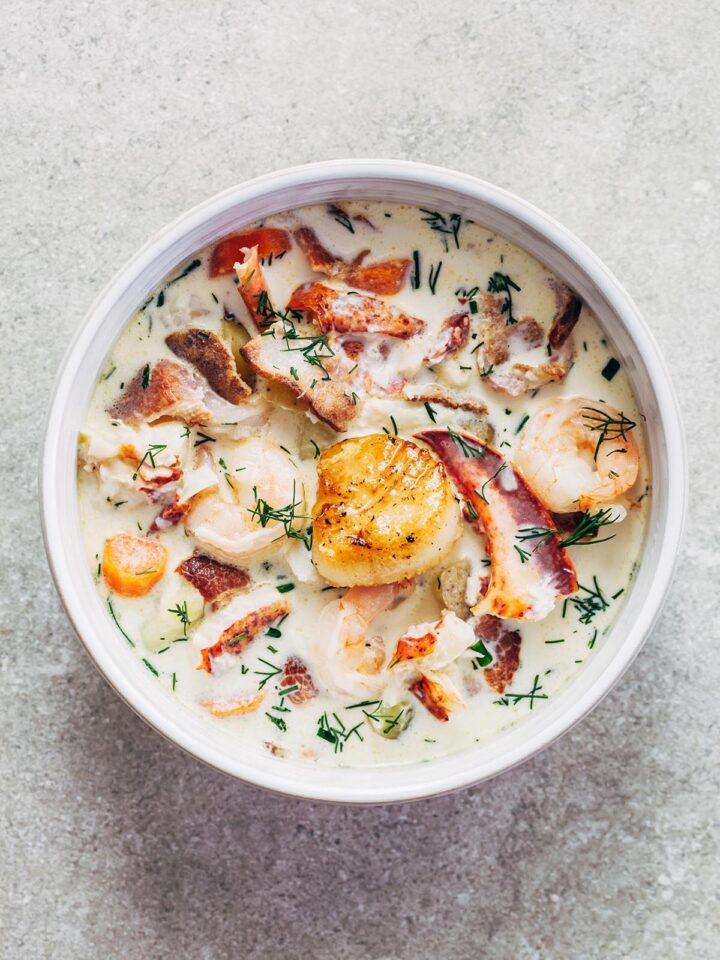
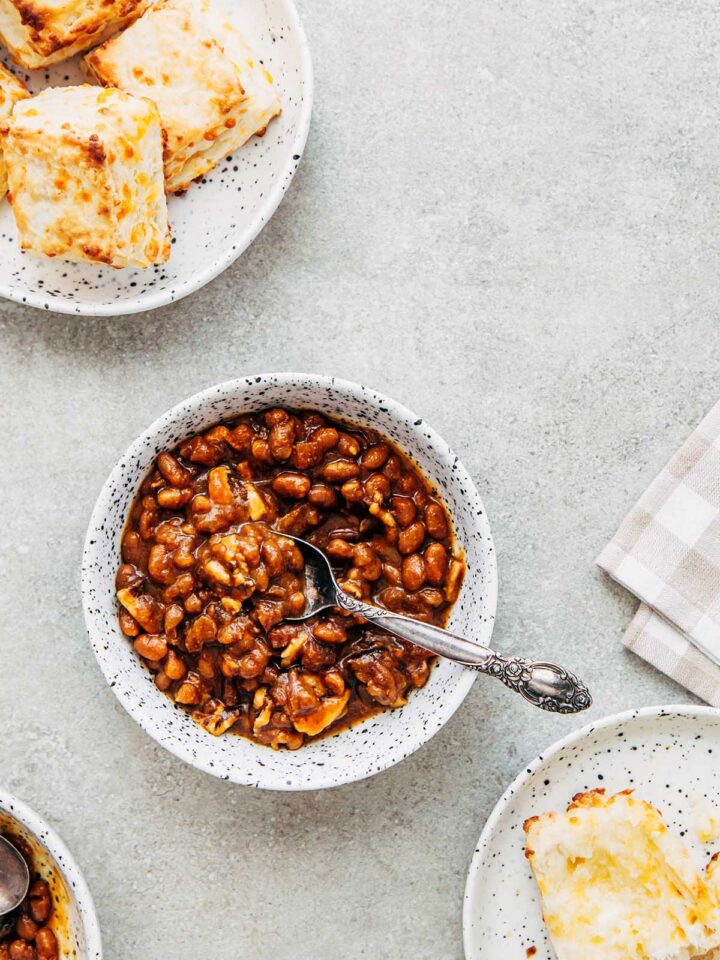
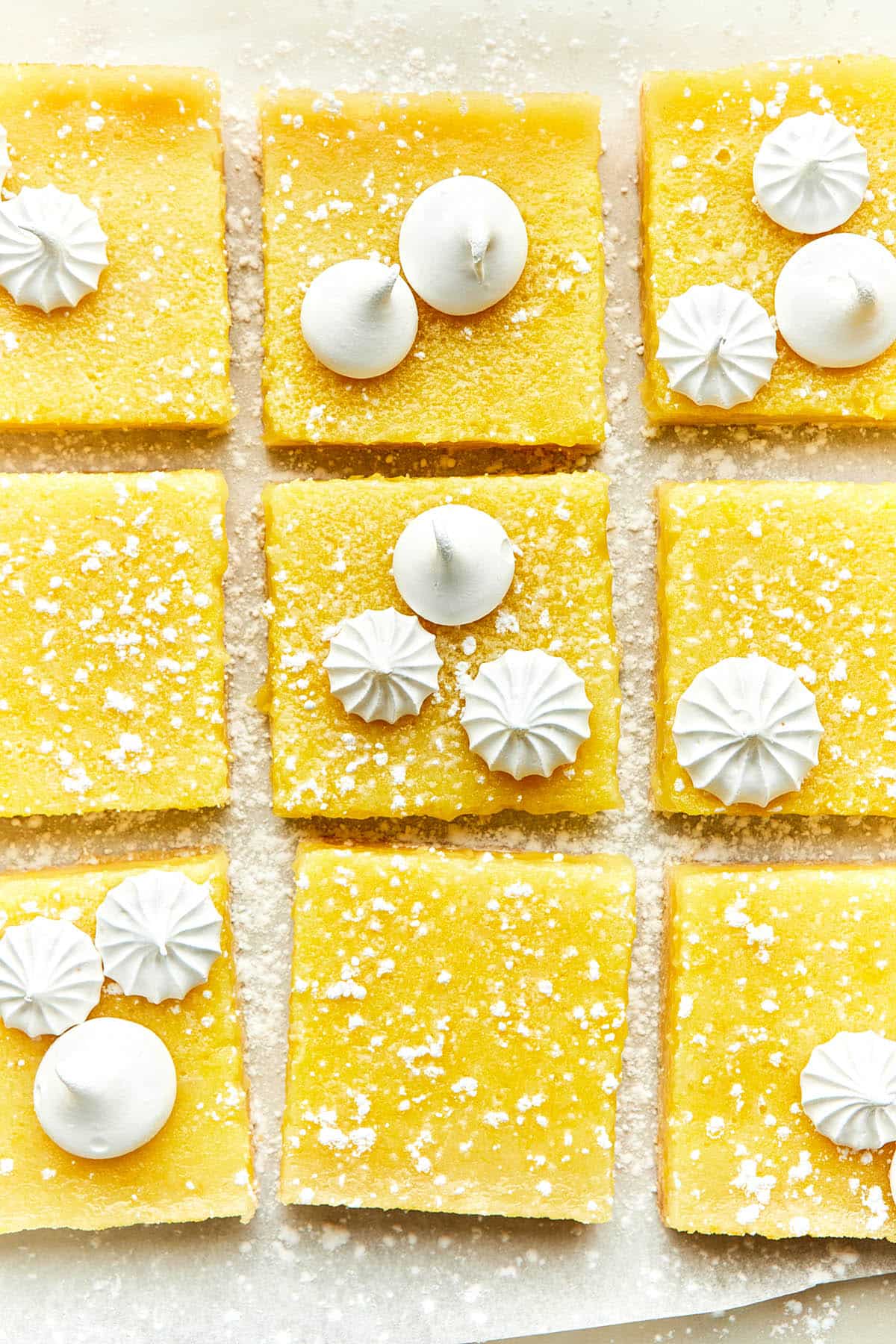
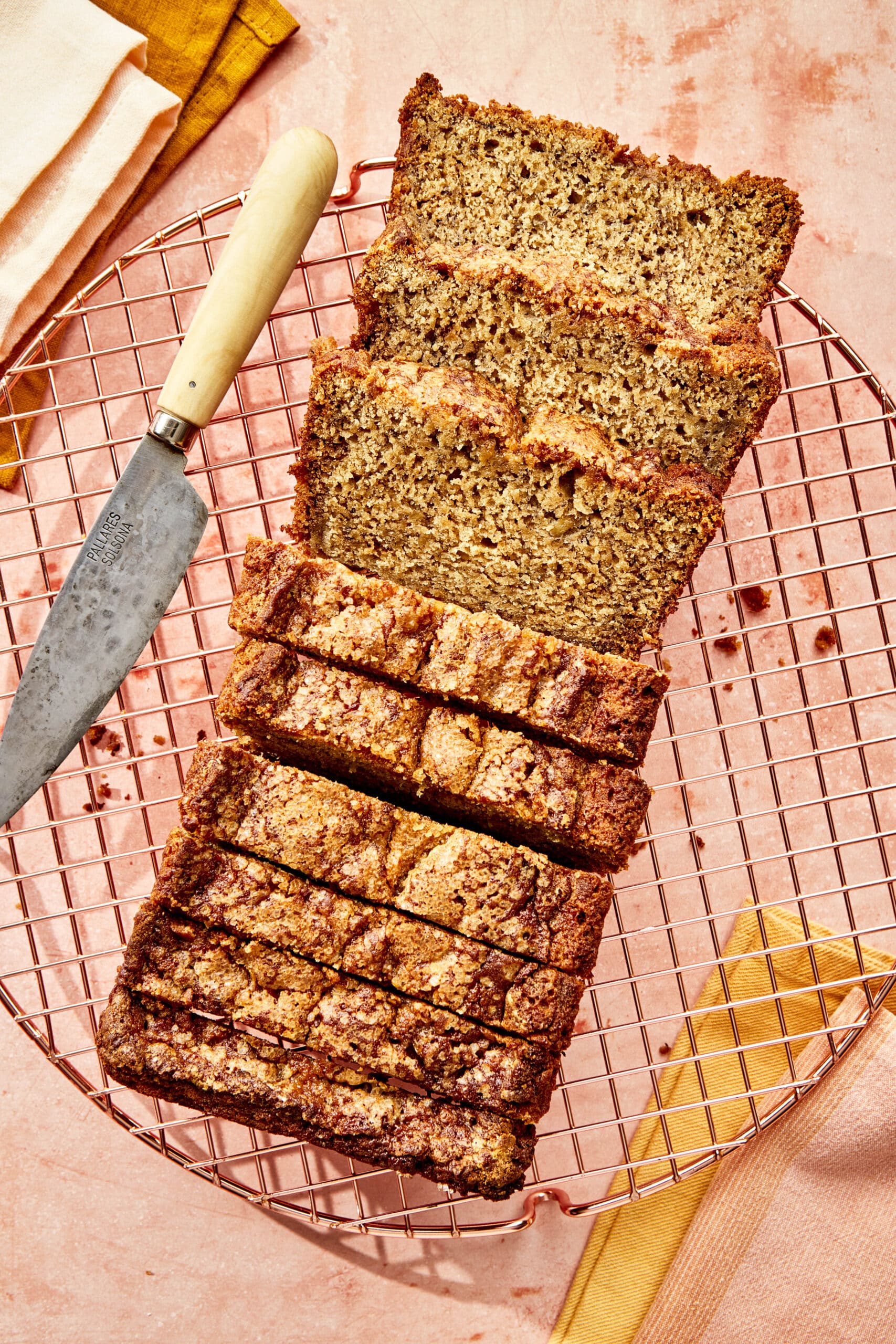
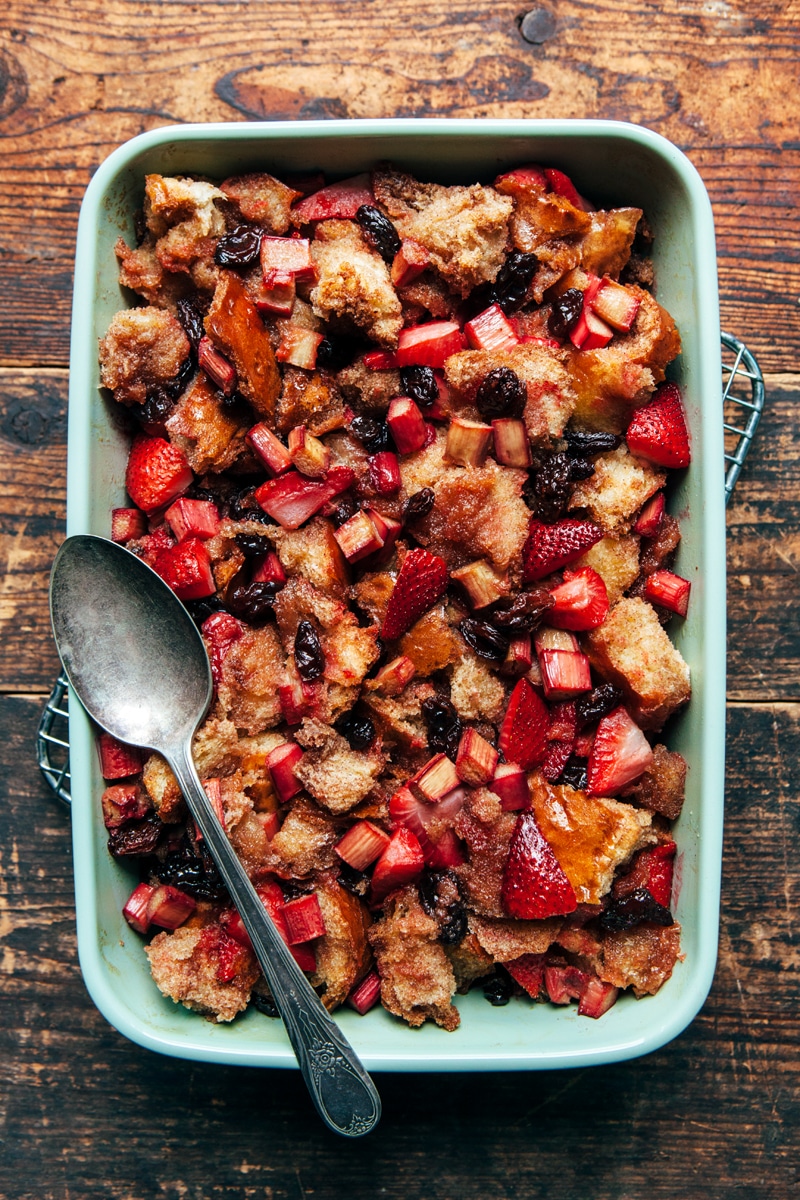
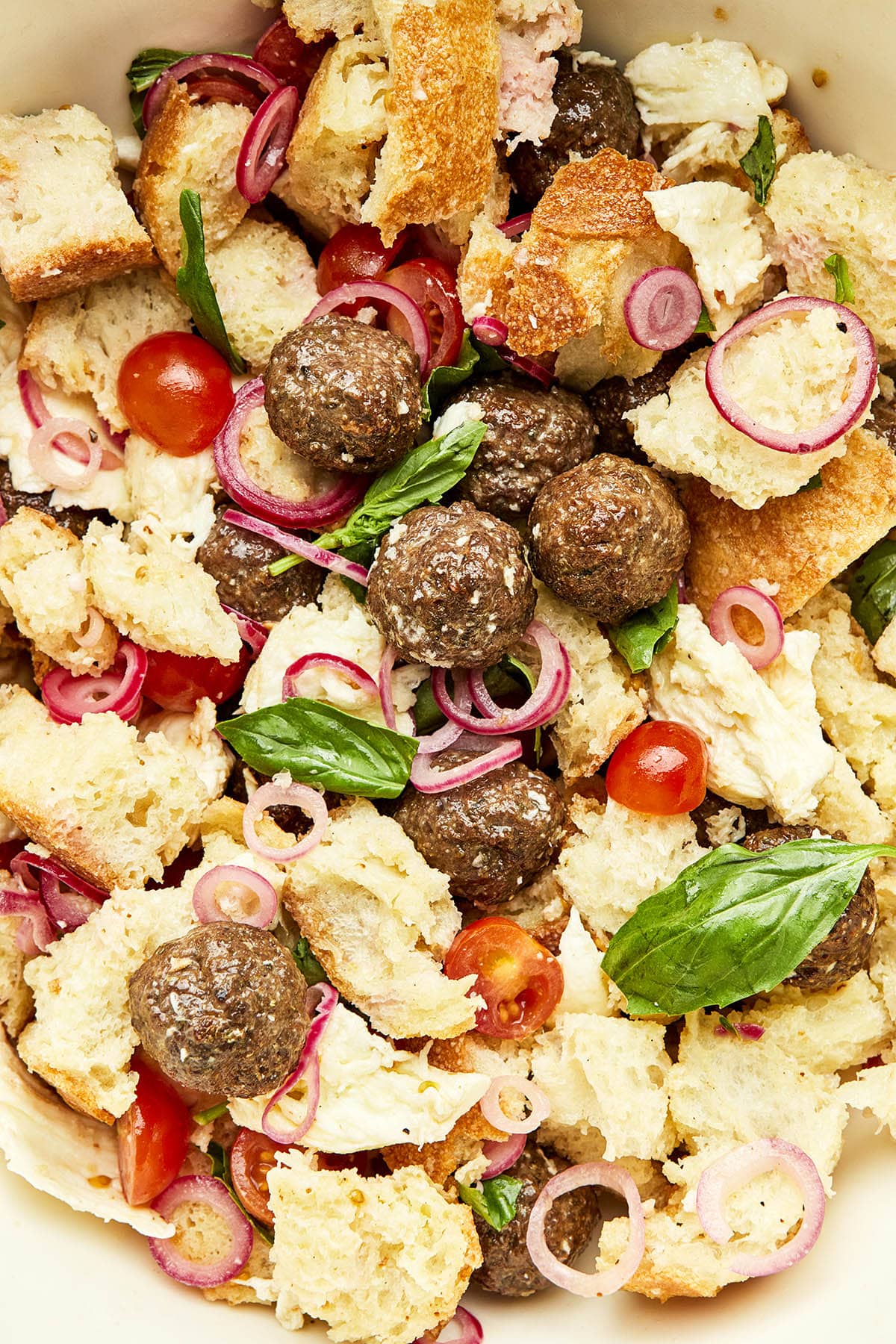

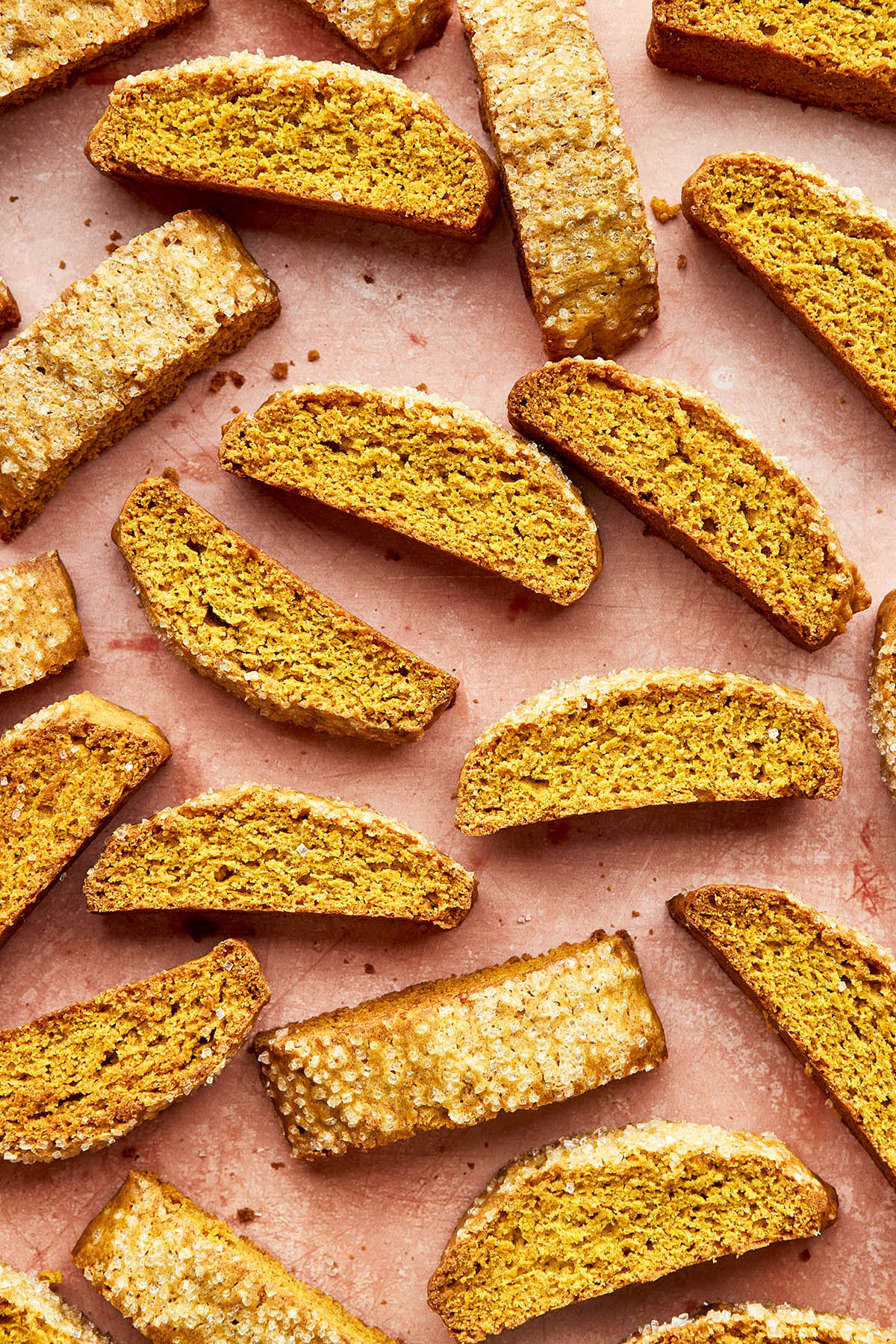
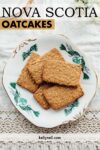
I made these the last weekend. Perfect. They were just what I remembered from traveling in Nova Scotia years ago. I’ve tried others, but these had the perfect taste. I had mine with a little apple jelly. My wife loved them. Thank you for the recipe. Time to go make more…
I love this recipe! I have now made it several times and will do so again. This is different from another recipe I have with the same name. I consider this recipe more of an oatmeal shortbread cookie. Don’t care what the name is, these are delicious!!